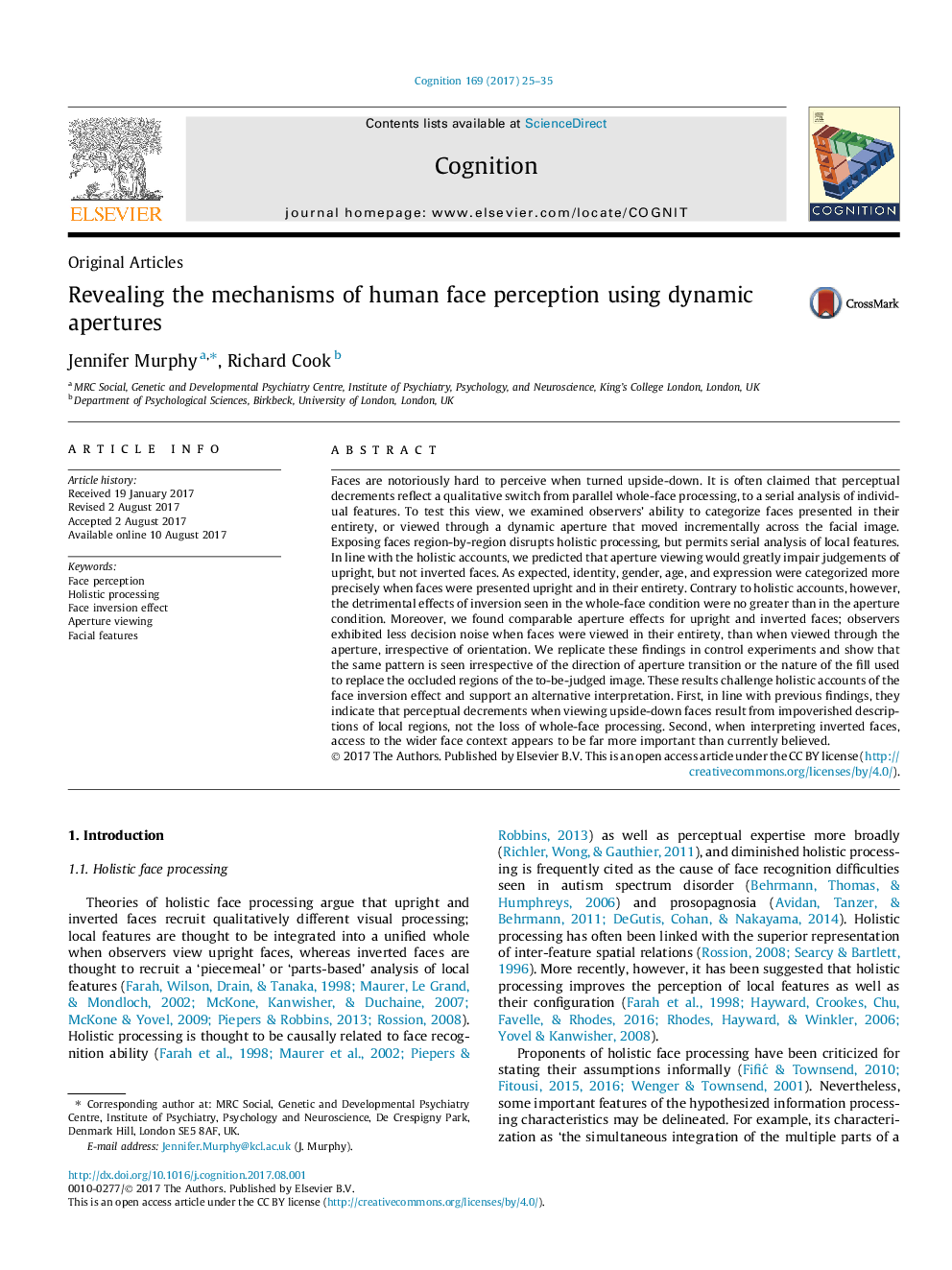| کد مقاله | کد نشریه | سال انتشار | مقاله انگلیسی | نسخه تمام متن |
|---|---|---|---|---|
| 5041458 | 1474098 | 2017 | 11 صفحه PDF | دانلود رایگان |
- We sought to compare the visual processing of upright and inverted faces.
- In one condition observers categorized faces presented in their entirety.
- In the other, a dynamic aperture moved incrementally across the facial image.
- Whole-face processing improved the perception of both upright and inverted faces.
Faces are notoriously hard to perceive when turned upside-down. It is often claimed that perceptual decrements reflect a qualitative switch from parallel whole-face processing, to a serial analysis of individual features. To test this view, we examined observers' ability to categorize faces presented in their entirety, or viewed through a dynamic aperture that moved incrementally across the facial image. Exposing faces region-by-region disrupts holistic processing, but permits serial analysis of local features. In line with the holistic accounts, we predicted that aperture viewing would greatly impair judgements of upright, but not inverted faces. As expected, identity, gender, age, and expression were categorized more precisely when faces were presented upright and in their entirety. Contrary to holistic accounts, however, the detrimental effects of inversion seen in the whole-face condition were no greater than in the aperture condition. Moreover, we found comparable aperture effects for upright and inverted faces; observers exhibited less decision noise when faces were viewed in their entirety, than when viewed through the aperture, irrespective of orientation. We replicate these findings in control experiments and show that the same pattern is seen irrespective of the direction of aperture transition or the nature of the fill used to replace the occluded regions of the to-be-judged image. These results challenge holistic accounts of the face inversion effect and support an alternative interpretation. First, in line with previous findings, they indicate that perceptual decrements when viewing upside-down faces result from impoverished descriptions of local regions, not the loss of whole-face processing. Second, when interpreting inverted faces, access to the wider face context appears to be far more important than currently believed.
Journal: Cognition - Volume 169, December 2017, Pages 25-35
